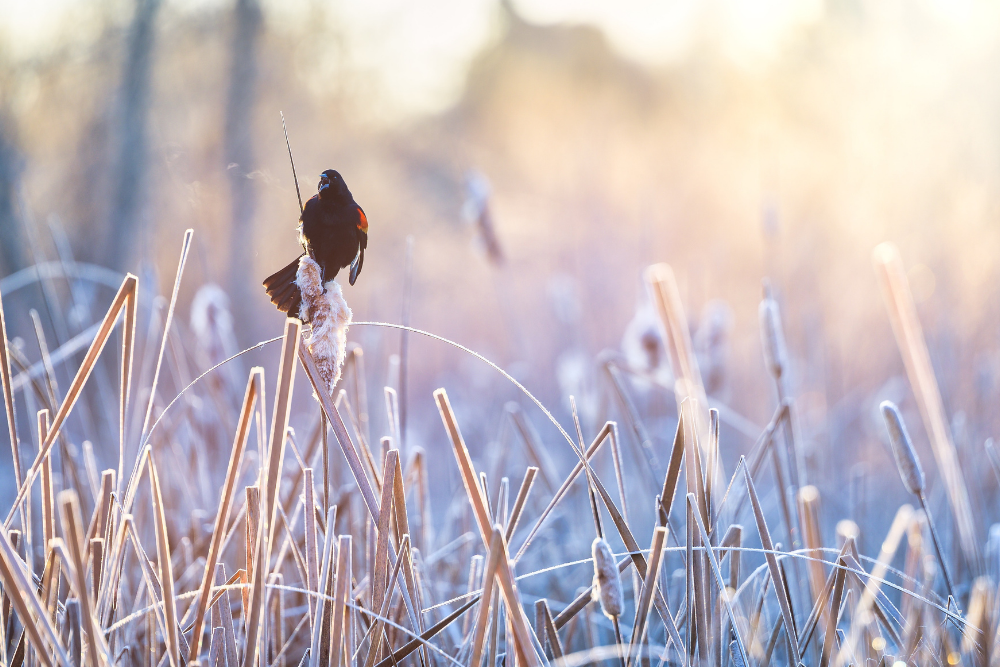
There are too many nutrients, like phosphorous, flowing into Lake Winnipeg. The size of Lake Winnipeg means that this is an issue that affects many municipalities and First Nations across Manitoba. Cleaner water is better for all creatures who live in the ecosystem, from humans to plants. One of the most obvious consequences of too much phosphorus in water is algae blooms which have been plaguing Lake Winnipeg for years.
The size and scale of this issue make it difficult for a single community to solve it on their own. But the good news is that coordinated actions taken at the community level can make a difference, both by improving the health of Lake Winnipeg and by providing direct environmental outcomes in upstream communities. Natural infrastructure is the key. Natural infrastructure can reduce nutrient loading by utilizing nutrient- hungry vegetation and natural landscape features. It can also provide a range of co-benefits, such as erosion control, wildlife habitat, flood reduction, and carbon sequestration.
In 2021, the Collaborative Leadership Initiative (CLI), a partnership of 11 First Nations and 16 municipal leaders from across southern Manitoba, sparked three natural infrastructure pilot projects to demonstrate what natural infrastructure can accomplish in the Lake Winnipeg basin. Each project took an innovative approach that was uniquely tailored to the community context – together, they provide the building blocks for a coordinated network of natural infrastructure across the CLI region. CIER worked with each of these communities – two municipalities and one First Nation – to build these projects on behalf of the CLI.
CIER worked with the Rural Municipality (RM) of Rosser to harvest bulrushes, grasses, and other plants (this combined organic matter is called ‘biomass’) from locations within the RM. Because these plants suck up so many nutrients from the water and soil, harvesting them also means removing the nutrients from the watershed — instead of allowing the biomass to decompose and release excess nutrients that will eventually flow into Lake Winnipeg. Thirty bales of biomass were harvested and are now being stored indoors. Eventually, the bales will be used by a new biomass heating system in an RM building, which has the potential to both displace natural gas and save the RM money. The harvest sites will also be monitored for regrowth in the spring, as we expect that removing biomass will stimulate new growth and improve habitat.
CIER worked with the Village of Dunnottar in the Summer and Fall to reduce phosphorous discharge from Dunnottar’s wastewater lagoon by cultivating and harvesting duckweed. Like other biomass, duckweed can act as a vegetative filter for water, cleaning out contaminants. The duckweed grew in enclosures over the Summer and approximately 230kg of duckweed was harvested in October. Just like the biomass in the Rosser project, removing the duckweed in the fall also removed all of the phosphorous that the duckweed sucked up as it grew in the lagoon over the summer.
CIER worked with Sagkeeng First Nation on a shoreline stabilization project that will protect the community from erosion by planting hundreds of trees on the banks of the Winnipeg River. The project involved grading a section of shoreline that is approximately 200 metres long and planting 550 native trees (primarily willow and silver poplar) with fast-growing, deep root systems that will stabilize the slope and reduce the runoff of nutrients and other pollutants. Nature-based solutions like this are essential to protect communities as we continue to feel the increasing impacts of climate change.
These three projects are examples of how we can collaborate to improve the health of Lake Winnipeg while providing additional benefits to communities through nature-based solutions. The vision of CLI leaders, and the hard work of our partners in Rosser, Dunnottar, and Sagkeeng, made these projects possible. The projects also benefited from the expertise provided by Strategy Systems Engineering (Rosser and Sagkeeng) and Ecological Restoration Services (Dunnottar).
We’d also like to acknowledge and warmly thank our funders for these projects: Environment and Climate Change Canada, The Conservation Trust, and Londre Bodywear.

